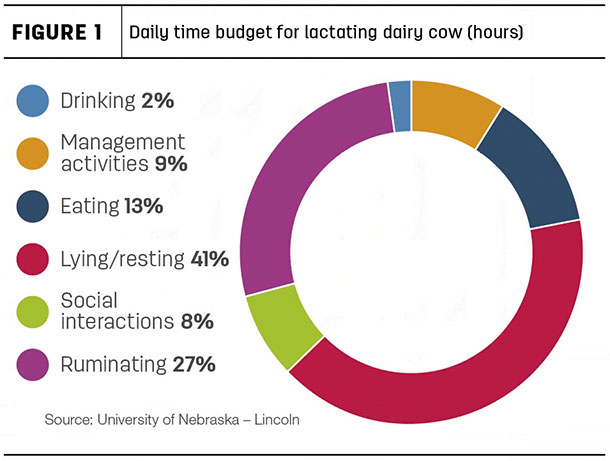1. Our goal for cows is to provide clean, dry bedding, which improves comfort and lying times while controlling bacterial counts and udder health while not interrupting natural movements of rising and lying behaviors.
To ensure optimal cow comfort, ask yourself these questions:
- Are cows and stalls clean and dry?
- Do cows easily and readily use the stalls?
- Are there injuries, punctures, abrasions, swelling of hocks, legs, hips, etc.?
- Do cows have to push, bang or bump against stall components to recline, rise or change positions?
- Do cows have traction to easily recline and rise?
The cow is the final inspector; if cows are not using stalls or are dirty and show signs of injury, change is necessary.

2. Our management goal is to reduce or eliminate injuries and swelling to hocks, necks, legs and hips of cows in the herd, while making the most efficient use of farm labor by reducing the amount of time required to clean manure from the stall and replace bedding.
3. Our comfort goal is to reduce the occurrences of any or all of the comfort issue red flags. The first way to reach this goal is to identify why cows show signs of comfort issues. One reason may be the stalls are too small for the size of the cow. Another reason could be inadequate bedding material (not enough is being used; it is too wet; bedding is not managed effectively; stalls are not cleaned often enough; etc.).
Watch for these red flags of cow comfort issues:
- Hock lesions – May be the result of small stalls and space restrictions, or short chains in tiestalls
- Abrasions on the back of the neck – Oftentimes caused by the height or location of the neck rail
- Broken tails – These are signs of poor animal handling
- Lameness – Indicators include overgrown claws, poor stall cushioning, short stalls
- Dirty cows – Not directly a cow comfort issue, but dirty cows are linked to higher somatic cell counts (milk quality issue)
By honing in on these goals, asking these questions and looking for the red flags, dairy farmers can identify the concerns holding their herds back from optimal cow comfort and the production and performance benefits that come with it. ![]()

-
Kim Clark
- Dairy Extension Educator
- University of Nebraska – Lincoln








